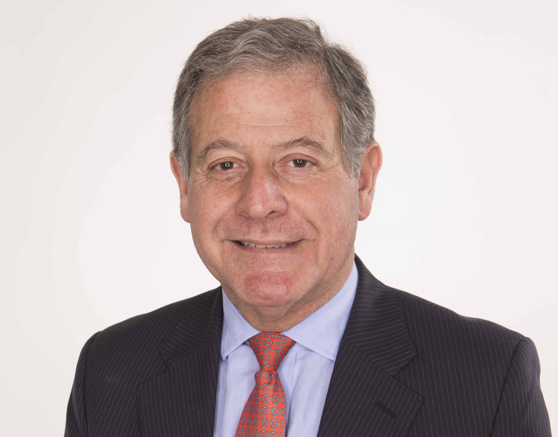Investors can’t get enough of South America’s ‘lithium triangle’

Henk Van Alphen, CEO of Wealth Minerals.
Lithium, commonly called “white petroleum”, drives much of the modern world. It forms a small but essentially irreplaceable component of rechargeable batteries, used in consumer devices like mobile phones and electric cars. It also has pharmaceutical and other applications.
More than half of the world’s identified resources of the mineral are found in South America’s “lithium triangle”, a unique stripe of high-altitude land covered with lakes and white salt flats that straddles Chile, Argentina and Bolivia.
And while the electric car market is still quite small, manufacturers are ramping up production, which means good news for those who have invested in the lithium, a key component for the batteries that will power those vehicles.
Thanks to that, investors are now flocking to the region, says Henk Van Alphen, chief executive of Wealth Minerals, a Canadian company with interests in Chile, Mexico and Peru.
In this short interview, he addresses concerns around lithium-ion batteries and discusses how tech can reduce pollution:
Q: How was Vancouver-based Wealth Minerals, a junior exploration company, able to attract Marcelo A. Awad, who was ranked as the #1 CEO in Chile, to join the company as Executive Director of Wealth Chile?

Marcelo Awad, executive director of Wealth Chile.
WM: “Marcelo Awad has had a long and distinguished career in the mining industry, including 18 years with Corporacion Nacional del Cobre de Chile (Codelco), and 16 years with Antofagasta Minerals S.A. (the Mining Division of Antofagasta Plc), including 8 years as CEO from 2004 to 2012, a period of very significant growth for Antofagasta. In 2011, Harvard Business Review, ranked Awad as the number one CEO in Chile, 18th in Latin America and 87th in the world.
“Over half of the earth’s identified Lithium resources are found in South America’s ‘lithium triangle: Chile, Argentina and Bolivia’ and when we set out to acquire lithium assets in Chile, we were able to attract Marcelo to our junior mining company because Marcelo could see the growth potential in acquiring multiple high-quality Lithium assets at a time when the Lithium market is just beginning to realize its full potential. I know of no other junior mining company that has been able to attract a senior mining executive of Marcelo’s standing and his influence on Wealth’s deal-making capacity has been obvious,” said Van Alphen.
This is the first time Marcello has taken on such an active role in a junior company. Currently Marcello holds director positions with Barrick Gold and Finning International, the world’s largest Caterpillar distributor as well as a senior advisor for Mitsubishi.
Q: Why is Chile an ideal country to produce lithium?
WM: “In order for a lithium brine to form, the location requires favourable geology with a lithium source, topographic control to form thick sediments in a basin, and an arid climate where annual evaporation exceeds seasonal rainfall. This is an unusual combination of factors and northern Chile is a perfect storm. Chile is essentially the ‘Saudi Arabia of Lithium’.” says Marcelo A. Awad, Executive Director, Wealth Chile. “Chile produced the second-highest amount of lithium globally in 2014. Chilean mines feature the largest confirmed lithium reserves in the world, with over 7,500,000 MT of lithium. The lithium produced from the Atacama Salar in Chile is the highest grade produced from brine in the world.”
Q: Is the Chilean government supportive of lithium mining?
WM: “There has been a dramatic change in the way that Chile manages its resources. Chile’s government, which owns a stake in several lithium projects sees public-private partnerships as the best way forward and has been actively promoting private investment in Chile’s extensive Lithium assets. At the present time, the Atacama Salar is the only salar from which there is commercial production, but Chile’s Sernageomin (Servicio Nacional de Geologia y Mineria) has published a list of 14 other high-potential Chilean Salars, which it has prioritized for future development.” says Awad. “What is most important to Chile is that the companies charged with mining our assets abide by Chile’s rigorous environmental and community standards, which are in the best interest of Chileans.”
Q: Tell me about Wealth Minerals’ Lithium properties in Chile?
WM: So far Wealth has announced acquisition deals in 3 of the 14 high-potential salars identified by the Chilean authorities and the Company has been able to achieve this in a matter of a few months. The Company is currently negotiating other acquisitions in Chile.
In February 2016, Wealth announced that it had negotiated rights to purchase 100% of Li3 Energy Inc., a US-listed company with Lithium rights in the Maricunga Salar in Chile, which is the second highest grade salar in Chile, and a strategic partnership with POSCO Canada Ltd., providing access to important processing technology.
In April 2016, Wealth Minerals executed a Letter of Intent to acquire an option agreement giving it the right to acquire exploration concessions located in the Salar de Aguas Calientes Norte, staking claim on 80% of the salar. In June 2016, the Company announced an additional deal in the salar, acquiring the remaining 20% for an undivided 100% interest in the entire Salar de Aguas Calientes Norte .
Also in June 2016, the Company announced acquisition of 100% rights in the Pujsa Salar in Chile. The rights cover approximately 80% of the salar’s surface area.
Q: How important is your Chilean lithium property to battery makers including Tesla Motors, Panasonic and LG Chem?
WM: “Battery makers including Tesla, Panasonic and LG Chem are expanding their production and expected to continue to expand production over the coming years,” said Awad.
Stormcrow Capital forecasts that “overall lithium demand will more than double from present levels through 2025.”
Q: What is the size of the lithium-ion battery market?
WM: The global market for lithium-ion batteries is a fast-growing one and is expected to gross $30 billion by 2020 according to research reports. While the majority of lithium-ion batteries are used in consumer devices such as mobile phones and laptops, forward growth for the market is their use in electric vehicles and energy storage applications. Navigant Research reports that “Lithium ion (Li-on) batteries have emerged as the leader in utility-scale applications of batteries on the grid by offering the best mix of performance specifications for most energy storage applications.”
Q: What is the forecast for the energy storage market?
According to the latest market study released by Technavio, the global advanced energy storage market will grow from USD 1.7 billion in 2015 to USD 4.1 billion by 2020, posting a CAGR of more than 18%.
WM: High costs, safety and security concerns, and low durability and efficiency restrict the use of batteries in conventional energy storage systems. However, rapid growth in investments to develop battery systems has enabled the production of advanced low-cost and energy-efficient batteries for grid storage and electric vehicles (EVs). These advances caused a surge in the use of Li-ion batteries for energy storage. Li-ion batteries are preferred for microgrids with renewable energy sources owing to their deep discharge life cycle, high energy, and power density. “High energy-to-weight ratios allow these batteries to store a large amount of energy in a small space. The use of remote off-grid storage, industrial peak shaving, and frequency regulation should also increase deployment of these batteries for energy storage,” says Vishu Rais, lead energy storage analyst at Technavio in the Global Advanced Energy Storage Market 2016-2020 report.
NOTE: This interview was edited for clarity and brevity. Produced with the collaboration of Vorticom PR.
{{ commodity.name }}
{{ post.title }}
{{ post.date }}






Comments